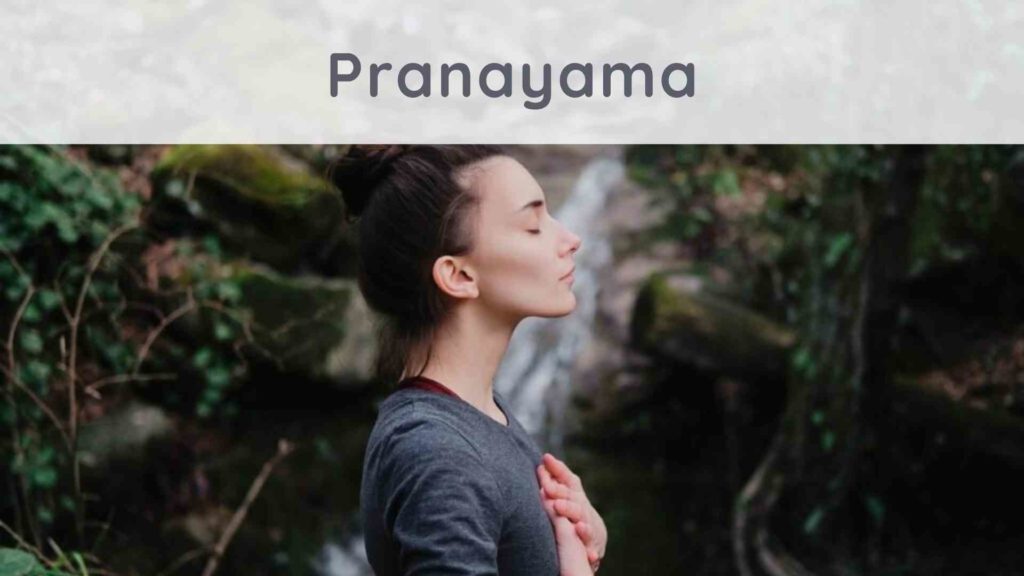Pranayama: how to practice?
Written by: Loris Vitry (holistic coach)
Validated by: Cathy Maillot (Osteopath)
Caution: If you have any medical questions or concerns, please speak to your doctor. Even if the articles on this site are based on scientific studies, they do not replace professional medical advice, diagnosis or treatment.

One of the ancient practices for controlling breathing is pranayama.
Several studies have shown that it can relieve asthma symptoms.
Pranayama is often used to treat disorders that are linked to stress.
You wonder how to practice it.
Find out in this article how to practice it.
The breathing of the blacksmith: Bhastrika pranayama
To complete this technique:
Take a deep breath from your nostrils
Above all, you should feel your diaphragm lower to allow your lungs to open and similarly force your abdomen to inflate.
Then feel your chest swell and your collarbones going up at the end.
Through your nostrils, breathe in quickly
In doing so, you should feel your chest deflate, and your collarbones go down.
When your lungs drop, you should notice the narrowing of your abdomen.
Just like rapid deflation, the expiration process must be done faster, unlike inspiration.
Repeat the exercise!
When done right, when you breathe in, your chest should be able to expand.
When you exhale, it will deflate.
Do this exercise for 4 to 7 minutes.
Speed up the process after acquiring the practice
If you are a beginner, you should evolve at a slow pace to prevent hyperventilation.
However, with some progress, you can gradually increase your breathing technique.
The skull shining breath: Kapalbhati pranayama
With this method:
Use your nostrils to force exhalation
Contract the muscles in your abdomen to get the air out to force your expiration.
The latter has to take less time than inspiration.
The pace of your forced expirations should be approximately one expiration per second.
Use your nostrils to breathe to fill your lungs
Between each expiration, do not force inspiration, let it happen without help.
Above all, you should feel that your diaphragm is lowering to allow the lungs to open.
Thus, the abdomen is forced to inflate.
Then feel your chest swell, and finally, your collarbones going up.
Concentrate your mental attention in the space between the eyebrows.
Alternate breathing: nadi shodhana pranayama
Follow these steps:
Close your eyes
You have to devote yourself totally to your breathing.
Use your right thumb to plug your right nostril.
You must press it so as not to let air in or out.
Use your left nostril for breathing in and fill your lungs with air.
You should be able to feel your diaphragm go down; this helps to open your lungs.
Then force your abdomen to swell.
Your chest should be able to swell in turn, and your collarbones will go up last.
Then remove your thumb from the right nostril
You have to keep the expired air in your lungs. Your hand should be placed near your nose.
To close your left nostril, use your middle finger and your ring finger.
You are free to choose the hand you want and remember that in case your arm gets tired, you can change hands.
With your right nostril, breathe out slowly and completely
To do this, you should be able to feel your collarbones go down.
Then your chest will deflate, and by the time your lungs empty, your abdomen should be able to shrink.
Once you finish breathing out, keep your left nostril closed.
Inhale through your right nostril while filling your lungs with air
Then open your left nostril while closing the right one.
Through your left nostril, breathe out slowly.
Do this exercise for 15 minutes.
You can rest every five minutes.
A minute of rest is more than enough.
It’s a great way to deal with stress.
External breathing: Bahya pranayama
This method consists first of:
Take a deep breath
Breath through your nose.
You should be able to feel your diaphragm go down, and this will naturally open up your lungs and force the abdomen to swell.
The chest will swell, and lastly, the collarbones will rise.
Exhale vigorously
You are called upon to use your diaphragm and abdomen to push the air outward.
With your chin, touch your chest
Tuck your belly in completely to create a space under your rib cage.
You will feel your abdominal muscles pressed against your back.
Keeping this position, hold your breath for as long as possible.
Remove the chin from the chest, head straight above the shoulders.
Breathe in slowly after lifting your chin
Fill your lungs with air.
You can repeat this exercise 3 to 5 times.
Bee breathing: Bhramari pranayama
Bee breathing is a straightforward method.
Focus on your breathing
Close your eyes and use your thumbs to close your ears.
Position your index fingers above your eyebrows.
Place your free fingers along with your nose.
From your nose, take a deep breath
Keep your lungs full of air for 2 or 3 seconds.
Then exhale through your nose while vibrating your vocal cords.
Note that the sound to come out should not come from the nostrils, but rather from the throat.
Repeat this exercise 6 times.
Psalmody breathing: Udgeeth pranayama
To succeed in chanting breathing, you must:
Take a deep breath through your nose
You should be able to feel the descent of your diaphragm to encourage the opening of your lungs and the swelling of your abdomen.
Then feel the swelling of your chest and last, your collarbones, which go up.
Exhale slowly
Produce “om” sound while you breathe out very slowly.
However, you must make sure to keep the M. short and the O long “OOOOOOOM”.
Repeat this practice three times.
These exercises will allow you to calm your stress.
You may feel uncomfortable with one or a few practices.
Just choose the ones that seem comfortable and relax.
It is essential to consult a doctor before practicing pranayama.
If you have health problems, before any exercise, make sure you have an unclogged nose.
Continue reading:
Dandruff: how to get rid of it naturally?

